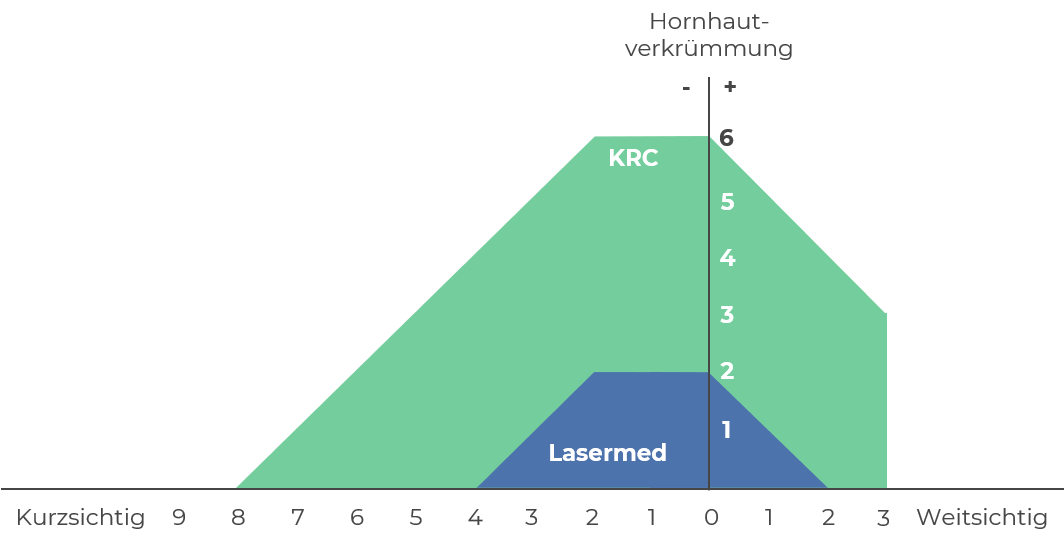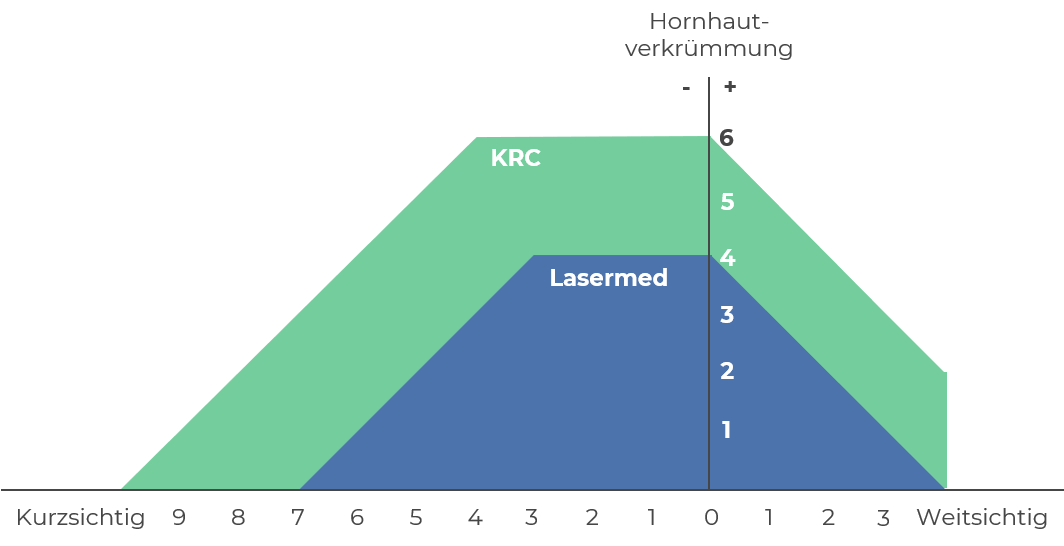Guidelines & Regulations
Whats close to our heart, when it comes to Laser Eye Surgery
Our guidelines & regulations
Laser Eye Surgery at Lasermed
Laser eye surgery is an aesthetic procedure where the costs are usually covered by the patient. We understand that wanting to live a life without glasses can be a sensitive topic. Although LASIK surgery is an economically viable treatment, your well-being and the successful surgery are of the utmost importance—this comes above any commercial interest.
In order to guarantee this, we at Lasermed have set ourselves strict guidelines and distinct boundaries for laser eye surgeries:
Lasermed Laser Eye Surgery
Lasermed Guidelines
In concrete terms, this means that our decades of experience have led us to set even stricter boundaries for our laser treatments than those outlined by the Refractive Surgery Commission (in German, Kommission Refraktiver Chirurgie—KRC), which are customary in our sector. This allows us to guarantee an even higher level of safety and quality. For example, this could mean advising you against LASIK surgery because of your high dioptric values and instead recommending an alternative treatment to live a life without glasses. Whereas in the same scenario, other providers would still recommend a laser eye surgery.
| Laser Eye Surgery by means of PRK | Laser Eye Surgery by means of Femto-LASIK |
|
|
|
Hornhautverkrümmung = Astigmatism; Kurzsichtig = nearsighted; Weitsichtig = farsighted
All values in diopter (dpt.)
*Source: KRC recommendations February 2019, at: http://www.aad.to/krc/qualit.pdf (in German)
Lasermed Laser Eye Surgery
Young adult vs. adult
Above all, we only use a laser to correct a visual disorder when the eye is fully-grown, and the values are stable. Even if a treatment is legally possible for a patient who is also legally considered an adult, most of our patients (with very rare exceptions) are at least in their mid-twenties. Why is that the case? —we want the correction to remain healthy and stable. Economically, this isn’t an efficient approach, but it is a healthier and more sustainable one.
Rare exceptions include minors who, due to their visual disorder, are not able to pursue their desired occupation. This includes jobs such as police officers or firefighters who are not allowed to wear glasses or contact lenses for safety reasons. Since the eye is not yet fully developed at this age, and refractive values can still change considerably, we inform minors (and their parents) that the result of a laser treatment brings them closer to their desired profession—it is not, however, the final result. The need for glasses or a corrective surgery is likely to follow in the coming years.
Lasermed Laser Eye Surgery
Why doesn’t LASERMED offer the ReLex SMILE method?
What is ReLex SMILE?
ReLex SMILE is a new method of laser eye surgery and has been approved in Germany since 2008. ReLex SMILE corrects a visual disorder by lasering a corneal disc and then removing it.
Why doesn’t LASERMED offer the ReLex SMILE method?
At LASERMED, your health and satisfaction as a patient always comes first. First and foremost, we always place your well-being above our commercial interests. Moreover, we rely not only on our own decades of experience, but also on independent scientific studies:
- Die ReLex SMILE ermöglicht bislang keine wellenfrontgeführte-Korrektur. 1
- Die Visuserholung ist nach ReLex SMILE langwieriger als nach LASIK. 2, 3, 4
- Komplikationen nach einer ReLex Smile können sehr schwer oder gar nicht behoben werden.
- Rein physikalisch ist die Präzision des Femtosekundenlasers – der bei der ReLex SMILE zur Bildung des Hornhautscheibchens genutzt wird – gegenüber der des Excimerlasers (PRK/ Trans-PRK und Femto-LASIK) schlechter.
When it comes to your eyes, however, LASERMED wants to put safety and precision first. LASERMED therefore does not offer the ReLex SMILE method.
1 Kermani, Ophthalmochirurgie 29: 151 – 157, 2017
2 Chiche A et al, J Cataract Refract Surg, 2018
3 Agca A et al, J Ophthalmol., 2014
4 Liu T et al, BMC Ophthalmol, 2019


